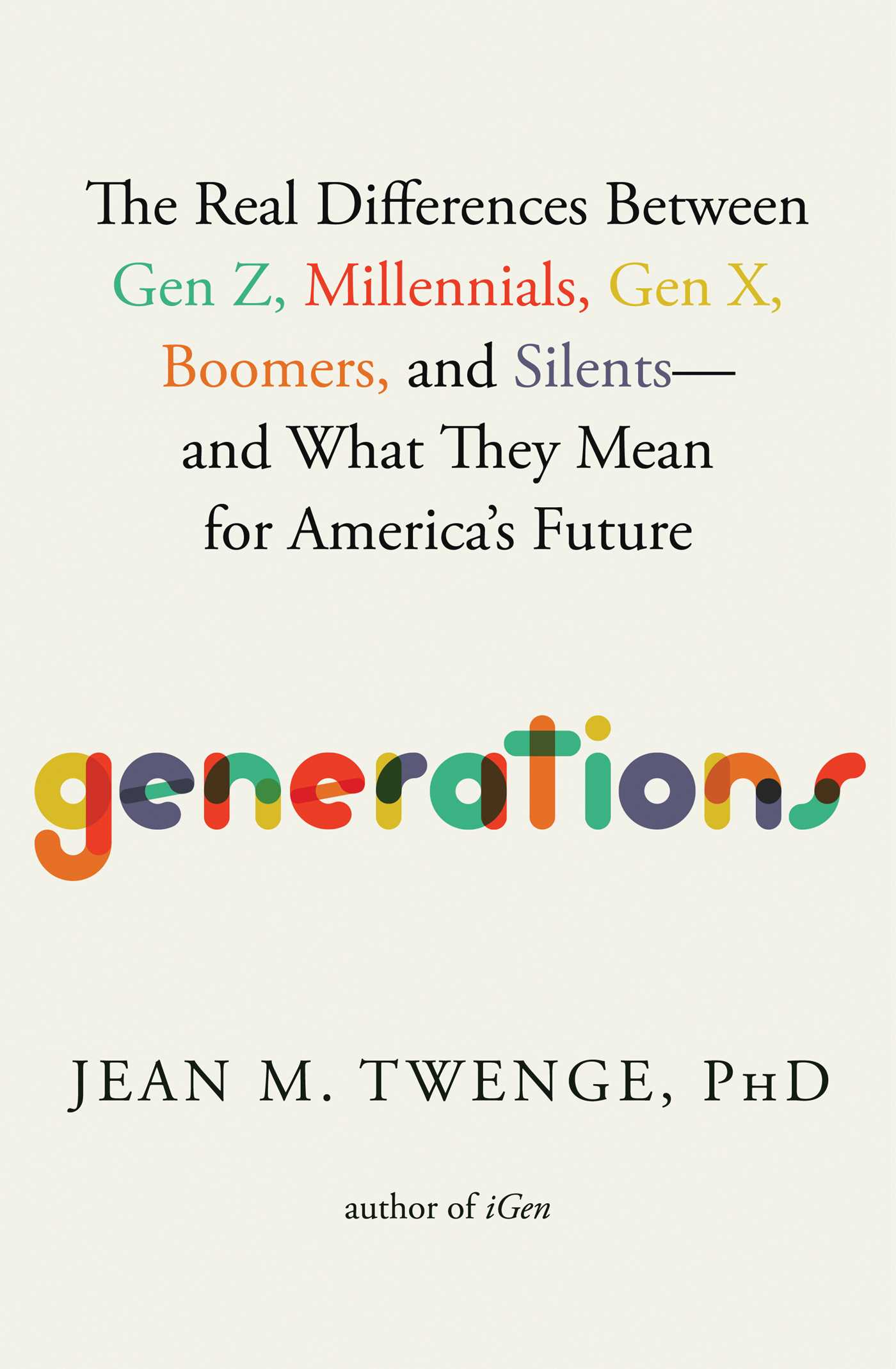Review: “Generations”
A new book analyzing the generations brings tons of data to the game, and a great academic translator

Written by Jean M. Twenge, PhD, a professor of psychology at San Diego State University, “Generations: The Real Differences Between Gen Z, Millenials, Gen X, Boomers, and Silents — and What They Mean for America’s Future” lives up to its potential to be a defining distillation of generational insights, utilizing the largest sets of cross-generational data available while providing both unifying perspectives and deep dives. It represents the first “big data” book about the generations, with a focus on the US.
Like many of us, I’ve been both skeptical and susceptible to the concepts of generations. Writing with full knowledge of this tension, Twenge walks the reader through why generations emerge and matter, the flaws around their edges, and — most interestingly — why they’re getting shorter.
The book is consistently eye-opening, with my first “aha!” moment coming when Twenge pointed out two facts about the Silent Generation (born 1925-1945):
- They were the real drivers of the civil rights, women’s rights, and sexual revolutions, as they were in their 20s and 30s when these movements were blossoming, while Boomers were too young to effect such changes
- Many “Silents” are still shaping our world — Warren Buffett, John Kerry, Bernie Sanders, Joe Biden, Steve Martin, Nancy Pelosi, Mitch McConnell, Harrison Ford, Jane Fonda, Henry Winkler, just as examples
The book is broken out by generation, after an extremely useful and convincing first chapter called, “The How and Why of Generations,” in which Twenge summarizes the themes discovered through her research and analyses:
- Generations are often bounded by the technologies that define them
- The trend, both technologically and societally, has been toward individuality, self-fulfillment, and comfort across generations, leading us from “fast living” — working, marrying, drinking, having children, and dying earlier — to “slow living,” where these things start later, if they start at all
The fact that generations are becoming shorter is attributable, Twenge asserts, to the pace of technological change quickening:
. . . generations are turning over faster because the pace of technological change has sped up. It took decades after the introduction of the landline telephone for half of the country to have one, but the smartphone went from introduction to more than 50% ownership in just five and a half years, the fastest adoption of any technology in human history.
As Twenge writes about trends toward individuality and slow living via these technological changes:
Until well into the 20th century, it was difficult to live alone or to find the time to contemplate being special, given the time and effort involved in simply existing. . . . Technology also leads to another cultural trend that’s had an enormous impact on how we live: taking longer to grow up, and longer to grow older.
She finds that today’s 18-year-old is more like a 14-year-old a generation or two ago.
Growing up more slowly, Gen Z is less likely to have a driver’s license, have had sex or tried alcohol before leaving high school, or to get married before age 30, if at all. The generation doesn’t see the need to rapidly embrace the accountrements of adulthood, for a variety of reasons, and some seem bizarre or too risky to them. After all, this was a generation that was not allowed to play outside alone as children, with parents worrying over them, so they are also more risk-averse.
The book’s tone is rational, the writing clear. Subjects that tend to get scrambled in conversations are nicely dealt with, in a calm and unflinching manner. For example:
What about the idea that older people have “always” complained about younger generations? This is often used to argue that generational differences don’t actually exist—how can younger generations be “too soft” when people said the same thing fifty years ago? It might be because they were always right. With technology making life progressively less physically taxing for each generation, each generation is softer than the one before it. Just because something has been said before doesn’t make it wrong, especially if the change keeps going in the same direction.
Twenge is careful to note that her work is purely descriptive — she is not judging whether getting married before age 21 is or was better than getting married after age 30, or if experimenting with adult vices before leaving high school was better than waiting or abstaining, or if risk-taking is better than risk-avoidance. The fact is, nobody knows what is better or worse about any of these things, but her research can document what is different, what has changed over time. And a lot has changed, and is changing.
The book is full of charts. Lists of generational figures kick off each chapter (the lists of popular names by generation are fascinating). My reading experience consisted of linear reading with bursts of index-hopping and chart-browsing. It’s a fun book to read in print.
In summary, here’s how Twenge breaks down the generations:
Silents and Boomers are the powerful older siblings, Millennials and Gen Z are the energetic but misunderstood younger siblings, and Gen X—the middle child—is often forgotten.
As a Gen X, that feels right.
Highly recommended.